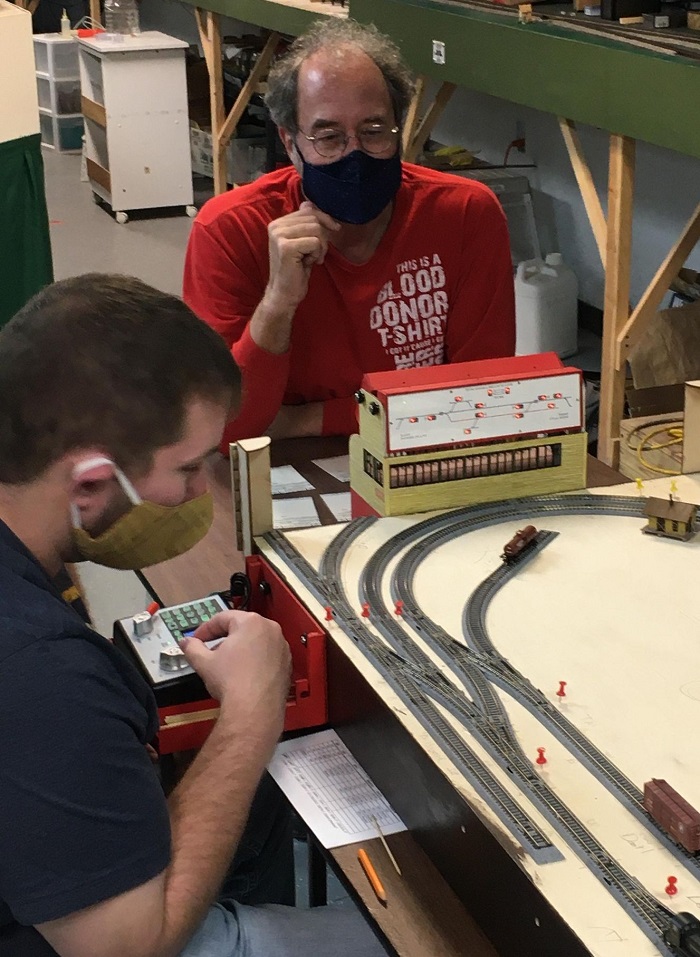Guide to Signals & Interlockings (Review)
Guide to Signals & Interlockings (Review)
 ‘ll admit that I was desperate for this book to come out. Locked down in the pandemic, without groups of model railroaders to converse with (possibly in the casual debrief after a session) I was building my own Tuscarora Branch Line and desperate to find out how Interlocking Towers worked (these are the towers you used to see all along railroad lines that would allow the operator to set signals and turnouts, often via very crazy series of push-pull rods along trackside). But how the logic of the system worked, how it would lock out and why, none of this I knew. I spent many a night pouring through railroad references and groups trying to get to the bottom of this.
‘ll admit that I was desperate for this book to come out. Locked down in the pandemic, without groups of model railroaders to converse with (possibly in the casual debrief after a session) I was building my own Tuscarora Branch Line and desperate to find out how Interlocking Towers worked (these are the towers you used to see all along railroad lines that would allow the operator to set signals and turnouts, often via very crazy series of push-pull rods along trackside). But how the logic of the system worked, how it would lock out and why, none of this I knew. I spent many a night pouring through railroad references and groups trying to get to the bottom of this.
Well, this book did not come out in time and we ended up building the interlocking panel using toggles and programmable circuits. Yes, it’s not as sexy as a full-fledged interlocking but it works well. So finally this book did come out and I raced home with it to read it straight through.
So, really, this book covers the history of signalling and interlockings in depth, all about the manufacturing companies and the breakthroughs that allowed for quicker, safer train movements. And that’s great. Then there are sections on how to actually figure out your operations (I really liked the suggestion to built fake signals to try out your layout with signals before putting in months of soldering and wiring – very clever). There were in-depth looks at how to install your components, even how to place repeater signals for those targets you can’t see (on the Tuscarora, we quickly realized that this would be a significant problem and added a repeater panel along the top of my tower/control panel).

Earlier that day: Ben on the locals, me on tower. Photo: Shannon Sikora
Note on above photo – the red push pins represent where the signals would go (you can still see the operating repeater panel over the tower). The signals are now installed and working great.
And there was even a section on how to actually build the slide plates that make up an interlocking, which looked very involved and made me happy with did it with programmable circuits. With twenty-four levers to control, I would have been cutting out slide plates for a good long time, and my logic for this tight interlocking plant would have been pretty extensive (as it was, I mocked it up on Excel and practiced with it before I was happy).
So, a good book? Um, in ways, yes. If you know what sort of signalling or interlocking you want to do, it’s a good leap between your plans and your incorporation. But if you really don’t know how an interlocking operates or what signal aspects are correct (or what they even mean), the book falls short. The history is nice but I really need to know what a three target signal conveys, and what colors and purposes the levers in an interlocking represent.
While I was over at my friends’ house running on the FEC Railroad, I got to talking about this and the three people who had the book agreed that as a basic reference, the book fell short. Then my friend Ken showed by a book on signalling that went into interlockings in depth (and I was breathlessly happy that I’d managed to infer much of what I’d done as correct). That’s the sort of book I was looking for, not twenty pages on how to use a computer program to set up a signalling system.
But everyone has his own needs. If you know how your signalling should work and need to figure out how it can work, by all means, get this book. You’ll find it online and likely at your local hobby shop.
